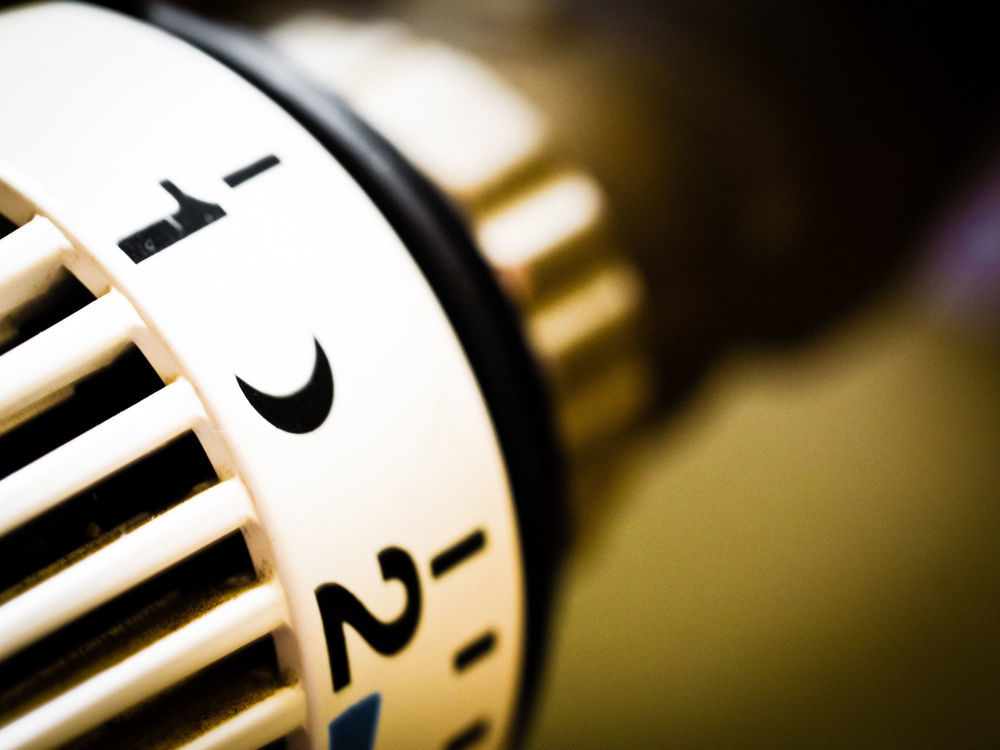
With energy prices rising, it is now as important as ever to ensure that the amount of heat loss in our homes in minimised as much as possible, meaning less energy is required in order to keep our homes warm. There are a number of things that we can do to reduce heat loss around our homes, which we are going to cover in detail so you can be armed with all of the information you need.
Where Is Heat Lost In A House?
In December 2020, it was estimated that 14.3 million properties had cavity wall insulation (70% of properties with a cavity wall), 16.6 million had loft insulation (66% of properties with a loft) and just 772,000 had solid wall insulation (9% of properties with solid walls). This data shows that there are roughly 7.7 million uninsulated houses within the UK without adequate insulating measures in order to reduce heat loss. Even for properties with insulating measures, these measures can sometimes be poorly fitted, or simply addressing just one area of heat loss, with a multitude of other problems present within the property leading to heat loss.
Heat, much in the same way as water will find any way to travel through a surface it can, which is why making a property highly energy efficient can be a difficult task. While heat rises, due to the amount of insulation that properties have placed in the roof, only 25% of household heat is lost through the roofline of a property. The majority of heat, around 35% of the total heat loss in a house, is through the walls of a property. 15% of heat is lost through the floorboards, with 10% through windows and 15% is lost simply through draughts and cold spots around the house.

How Is Heat Lost Through A Roof?
Uninsulated roofs or poorly insulated roofs can allow significant amounts of heat to escape from a house due to the fact that heat rises. Roof and loft insulation of around 300mm is required by the latest Building Regulations, which can either be rolls of insulation materials such as wool, rigid insulation boards or spray foam insulation. When implementing roof insulation, it is crucial to ensure that there are no gaps in the insulation as this will simply allow the heat to pass through the gap and reduce the benefit of the insulation.
With an estimated lifespan of 40 years, it is predicted that loft insulation will pay for itself many times over. If you can access the loft easily and it does not suffer from any damp problems, you can install the insulation yourself. If you already have loft insulation, it is important to check that this is all intact and there are no gaps where heat may be leaking out.

How Is Heat Lost Through A Floor?
Depending on the type of floor a property has, floors can contribute towards substantially heat loss. Suspended timber ground floors particularly, commonly found in older properties, allow a large amount of heat to pass through draughts can benefit from insulating measures such as wool being applied underneath the floorboards. In properties with solid floors, rigid insulation boards can be laid underneath carpets to maximise the insulation of the floor.
As a guide, laying mineral wood insulation underneath timber floors could save you about £110 a year in energy bills, as estimated by the Energy Saving Trust.
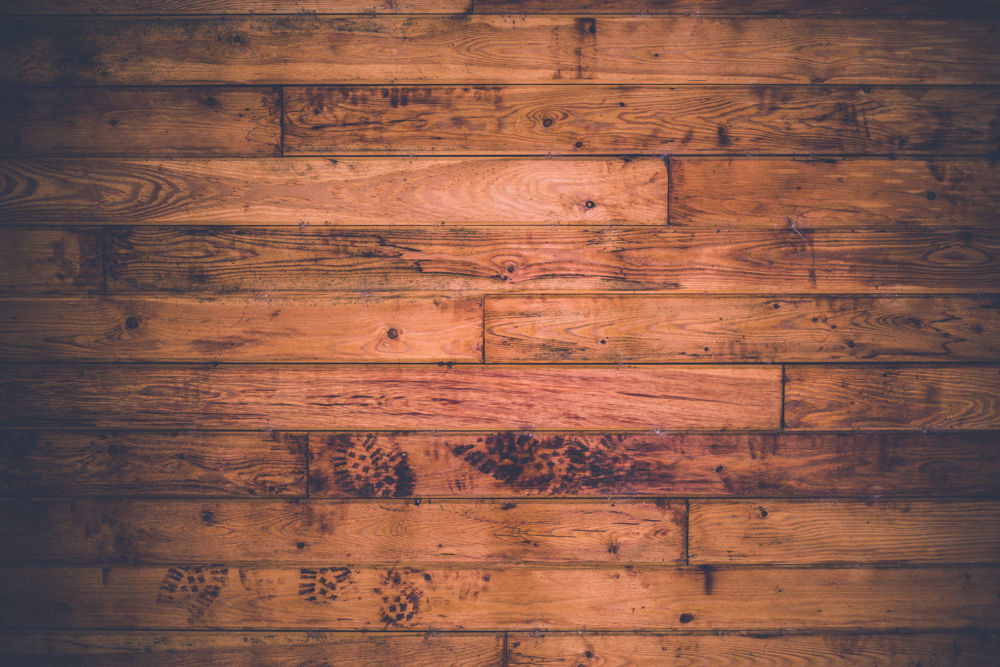
How Is Heat Lost Through Windows?
Windows allow air to pass through small draughts or simply through single glazing windows. Double or triple glazing windows are an effective way to prevent heat loss through windows, although not always the most affordable option. It is important to make sure the seals on your windows are air tight, as any old, loose window fittings will allow air and heat to leak out of the window. The reality is, while windows contribute to heat loss in a house, the surface area of a window is much smaller than the walls for example, so the proportion of heat that is lost will always be lower than other areas around the house.
Replacing single glazing with A++ rated double glazed windows could save up to £235 a year and 405kg of carbon dioxide, according to the Energy Saving Trust. When trying to get a guide for the energy efficiency of a window, check for the ‘u-value’ of the window which will be displayed on the energy label.
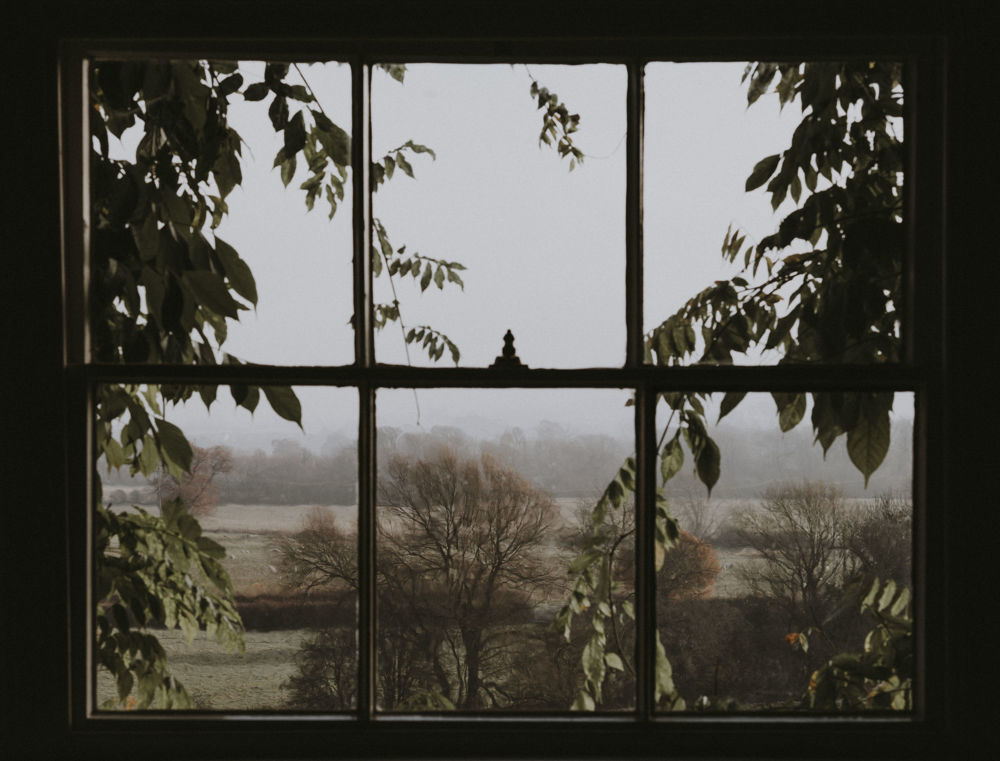
How Is Heat Lost Through Draughts?
Any nooks and crannies will allow heat to escape through your house and are often the most overlooked part of trying to reduce the heat loss in a house. While sometimes obvious, there are always small, hidden gaps where heat will escape if given the opportunity. The Energy Saving Trust estimate that draught-proofing a property can save a typical semi-detached property £60 per year in energy bills. The main areas to draught-proof are windows, doors, chimneys & pipework, which will all contribute to heat escaping a property.
Draught excluders at the bottom of external doors, draught-proofing strips around window frames and applying silicone fillers around pipework can all help to prevent heat from passing through draughts, helping to keep the warmth in and also importantly the cold out.
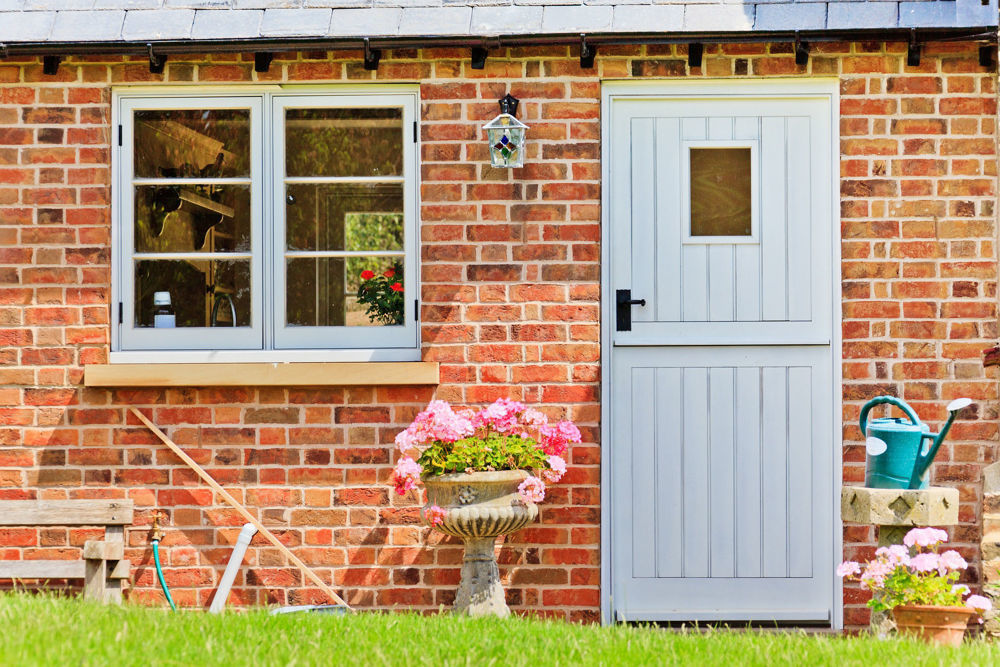
How Is Heat Lost Through Walls?
Heat loss through walls is a complex issue that can be caused by any number of things. Accounting for as much as 35% of heat loss in houses, walls are the single biggest cause of heat loss. This is simply due to the fact that walls account for the largest surface area of the house, meaning when the walls are poorly insulated, they allow a huge amount of heat to pass through fabric of the building.
In order to establish the factors that contribute to heat loss through walls, it is important to discuss the different types of walls you find. There are two types of wall construction; solid wall and cavity wall.
Solid Walls Vs Cavity Walls
Solid walls, as the name would suggest, consist of one singular wall all the way through which was typically used pre-1920's. Cavity wall properties consists of two layers of wall that have a 'cavity' or 'gap' in the middle, which is the type of construction generally used after the 1920's.
This hollow centre was designed to assist with what is known a water ingress. Exterior walls, whether they are brick, concrete, stone or render are porous, meaning they can absorb moisture. The more porous the surface, the more water it will absorb and ultimately hold within the material. Wind-driven rain soaks these building materials, causing them to become saturated with water. This causes a number of problems. Firstly, when this moisture freezes it can undergo what is known as a 'freeze-thaw cycle'. Freezing temperatures cause the water to expand, causing movement within the wall. This opens up cracks in masonry and render which allows more water to enter the exterior wall, causing a cycle of damage.
While damaging to brickwork, this water ingress leads to problems with penetrating damp, which causes wet patches and black mould to develop on interior walls. This can occur in two situations. Firstly, in the case of solid wall properties, this moisture can soak through the external side of the wall and straight through into the internal wall as there is no barrier to prevent the moisture from travelling. This also means that solid walls can hold a large amount of moisture, saturating the walls and making it very difficult for them to fully dry out.
The second way this can occur is with cavity walls that have poorly fitted cavity wall insulation. Cavity walls are designed to prevent the transfer of moisture from external wall to internal wall, however cavity wall insulation can re-create this gap. When cavity wall insulation is poorly fitted or retrospectively fitted, it does not leave a gap between the insulation and the external wall, which means it simply allows moisture to travel from the external wall, through the insulation and into the internal wall.
You may be wondering what this water ingress has to do with heat loss? Well, the simple fact is that damp content of 5% can lower the insulating properties of a material by 50%. When either the external wall or the internal wall of a property become wet, they allow more heat to be lost out of the property. This is the same way that wearing wet clothes causes us to become cold.
How To Keep Walls Warm
There are two ways to improve the insulation and energy efficiency of walls; to add insulating materials and to keep walls dry.
WALL INSULATION
Wall insulation can be applied in a number of ways, depending on the construction of a property. The main form of wall insulation is cavity wall insulation, which can either be added at the time of construction through insulation boards made of wool, or by retrospectively spraying insulation into a cavity wall through small holes made on the external wall. For properties with a solid wall, or when cavity wall insulation isn't suitable, internal insulating boards can also be added to the inside of a property, which isn't always favourable due to the fact it can be invasive on the property.
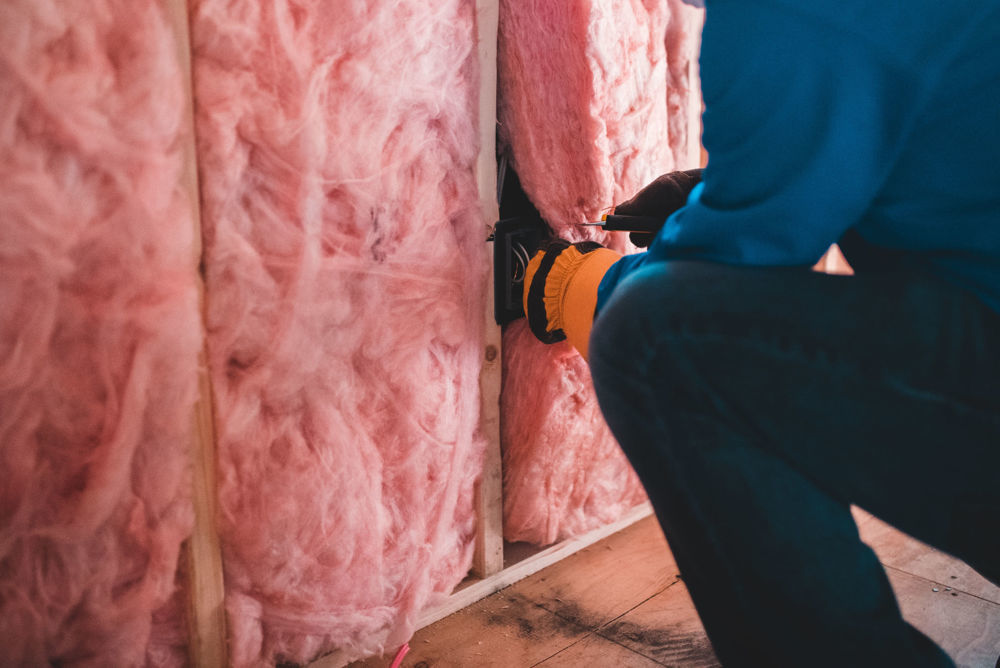
KEEPING WALLS DRY
Keeping walls dry can be just as effective at preventing heat loss than adding much more costly insulation. In order to find the most suitable treatment, it is important to establish how much moisture is present in the wall and what the source of the moisture is. While walls can become saturated through leaks or rising damp, the most common cause of wet walls is either it absorbing into the wall either through the interior wall through condensation, or the exterior wall through penetrating damp.
Condensation builds up naturally through day-to-day life such as dryers, dish washers, radiators and showers, which is why it often gathers in high humidity rooms such as bathrooms and kitchens. When this condensation builds-up on interior walls, it can lead to black mould growth across the walls and ceilings, as well as make the interior walls colder. Advanced anti-condensation paints can prevent the formation of condensation and black mould growth thanks to the ability to absorb and hold heat.
While condensation can cause heat loss, the significant cause of moisture-related heat loss is due to water ingress on exterior walls. When it comes to preventing water ingress on exterior walls, it is important to provide the wall with added protection from water absorption. This can be done by applying any waterproofing product, however you must ensure it is highly breathable. If you apply a low breathability waterproofing product, otherwise known as 'sealers', this will simply trap moisture within the property and cause moisture to build-up, not only causing damp but also causing increased heat loss. For this reason, to keep exterior walls warm and dry, it is important to apply a waterproof and highly breathable product.
Emperor Paint advanced nano-technology creates what is known as a super hydrophobic (highly water repellent) surface on exterior walls that causes water to simply form beads on the surface and fall off, before it can soak into the masonry. While repelling water, nano-technology also remains highly breathable, as it lines the pores of the substrate without sealing these completely like a brick sealer. This means that while water cannot soak into the wall, any water vapour from condensation can naturally breathe out of the wall and keep it completely dry.
There are two forms of treatment; Emperor Masonry Paint which is available in a range of colours, or Emperor Masonry Creme which is a clear, invisible treatment. This provides the flexibility to achieve the look you desire, whether you want to give your walls a refresh with a new colour, or you want to maintain the natural beauty of your masonry.

Both Emperor Masonry Paint and Emperor Masonry Creme were independently tested in a 25 year accelerated weathering test to establish not only how long the products perform for but also how they insulate an exterior wall. After 25 years of weathering, both products 'showed no signs of deterioration in performance or appearance' providing them with a 25+ year proven performance and were found to keep a masonry wall up to 6°C warmer on average when compared to a non-treated masonry wall.
Frequently Asked Questions
Q. HOW DO YOU APPLY WATERPROOFING PRODUCTS?
Unlike many other forms of insulating measures, applying a waterproofing treatment to a property can be done by almost anyone. Emperor Masonry Paint and Emperor Masonry Creme are applied slightly differently, however there are a few common steps in the process.
Firstly, it is crucial to ensure the surface is clean. If you apply anything to a surface that is dirty, you are not only going to get a poor finish but will impact the performance. There are two parts to cleaning an exterior wall. Firstly, you must remove any dirt from the wall using a stiff brush, hose pipe or a pressure washer on a low setting. It is also important at this point to remove any loose or flaking paint if necessary. The second part of the cleaning process is to apply a fungicidal cleaner such as Emperor Exterior Cleaner, which kills any organic growth on the wall to reduce the risk of this from blooming once treated. Simply apply the cleaner to the wall using a brush or roller and leave it to dry for 2-3 hours. After this, if you are using Emperor Masonry Creme, wash the cleaner residue off the wall with a hosepipe or if you are using Emperor Masonry Paint, you can leave this on the wall.
Once any repairs are made to the wall such as filling, you can then apply Emperor Exterior Primer to any bare surfaces that you want to apply Emperor Masonry Paint to. This primer helps the paint adhere to the surface and makes sure your first coat doesn't soak into the porous brick. If using Emperor Masonry Creme, you do not need to prime as this must absorb into the masonry!
When applying Emperor Masonry Paint, ensure you apply the product at 5-6m2 per litre on smooth surfaces and allow it to fully dry between coats, which can take up to 8 hours. Using a brush to apply the paint to the edges and then a long-pile roller to paint the rest of the surface is the best way to apply the paint. When applying Emperor Masonry Creme, you simply have to apply the product at 5m2 per litre using a brush or long-pile roller and leave it to soak in. Over 1-2 hours, it will soak into the brickwork like a moisturiser and become completely invisible.
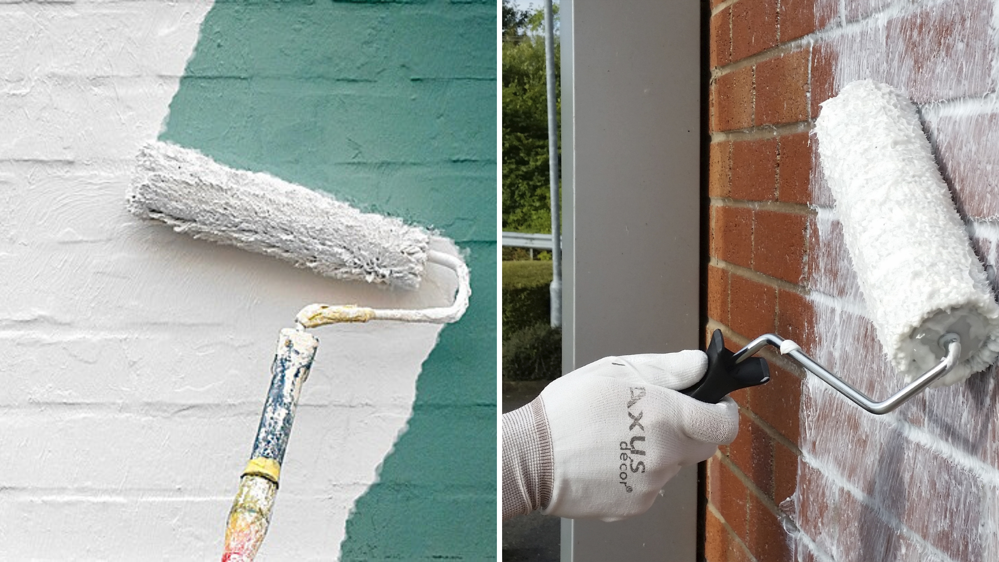
Applying Emperor Masonry Paint (left) and Emperor Masonry Creme (right).
Q. WHAT SURFACES CAN I APPLY EMPEROR MASONRY CREME TO?
Emperor Masonry Creme is a penetrative system which means it works below the surface of a material. It absorbs deep into the substrate and chemically bonds and becomes part of the substrate itself. It can be applied to any natural mineral surface that has not been painted, including brick, stone, concrete and render. If you want to treat a surface that has been painted, either remove this coating or apply Emperor Masonry Paint, which can be applied to any painted surface, or any bare surface once Emperor Exterior Primer is applied.
Q. WHAT OTHER MEASURES CAN I TAKE?
There are a number of small things we can do to reduce heat loss around the house that are quick and easy. The Energy Saving Trust suggest that fitting your hot water cylinder with an insulating jacket can save as much as £70 a year in energy bills and 155kg of carbon dioxide emissions. Even simple things such as drawing your curtains can help to prevent heat loss through windows, as well as simply adding a thick, woollen rug to draughty floorboards.
Q. CAN A CAVITY WALL PROPERTY WITHOUT INSULATION BENEFIT FROM WATERPROOFING?
When a cavity wall is unfilled, there can often by rubble at the bottom which can allow moisture to bridge the cavity and create a thermal bridge for heat to be lost. For this reason, like properties with solid walls or those with poorly fitted cavity wall insulation, you can see thermal benefits from treating a property with a bare cavity with an external waterproofing treatment.
The only case where you may not see a thermal benefit is if you have cavity wall insulation that is not allowing moisture to bridge into the house. In this case, while you won't see better insulation, you will get the rest of the other benefits of waterproofing an external wall, such as reducing damage to exterior walls and peeling paint.
We hope we have answered any questions you may have had regarding how to reduce heat loss in a house and the easiest methods of insulation. If you have any other questions, feel free to get in touch with our team of experts who are on hand to assist you. Contact them today by emailing info@emperorpaint.co.uk or calling them on 0161 509 9009. Alternatively, shop our range of products today and get FREE delivery on all orders.

